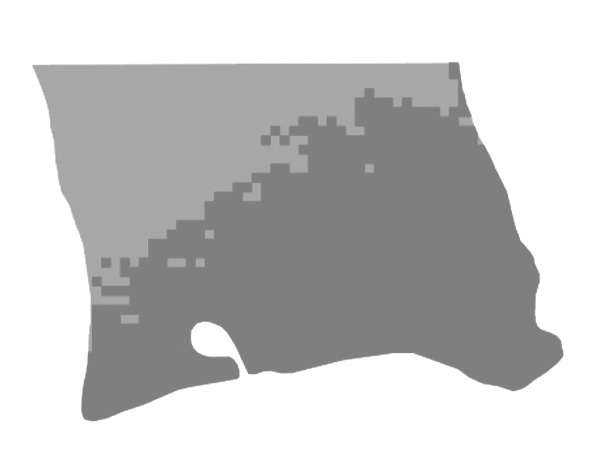Telecom Informer
by The Prophet
Hello, and greetings from the Central Office!
I'm on Point Roberts, which is a U.S. exclave located 22 highway miles away from the U.S. mainland. It's surrounded on three sides by water, and on the north by Canada, meaning it's physically disconnected from the rest of the United States. This makes telecom both interesting and highly unusual, with multiple ongoing projects to upgrade and modernize both wireline and wireless connectivity. I'll undoubtedly be writing more about this place in future issues.
It has been a lovely summer so far here in The Exclave, although somehow Verizon remains the only U.S. mobile carrier operating here. This has been the case for over ten years. Given that they have a monopoly, Verizon provides only barely enough service to keep their customers from roaming on Canadian networks when in the vicinity, but not enough service for good or reliable coverage (the county-imposed 149 foot tower height limit doesn't help, either). Although Verizon brags about their 5G coverage, it's nowhere to be found here (except on Canadian carriers, whose signal bleeds across the border) and the 4G signal is intermittent at best. Of course, given the local affinity for conspiracy theories, Verizon may have decided that the political hassle of 5G is more trouble than it is worth.
It's not just a lack of incentive to invest that causes continual service issues. Operating reliable mobile phone service is notoriously difficult along the U.S.-Canada border, as I have written about in previous issues. It's especially tough for Verizon to get this right on Point Roberts, where a bustling Canadian city of 21,000 people (and growing) sits just north of the border. Tsawwassen neighborhoods are built right up to the border, neatly in a straight line, with their backyards facing The Exclave. Because Canadian carriers put in their towers first, Verizon is prohibited by the FCC from causing interference in respect of international agreements. This means an extremely lopsided coverage area, as shown on the following map sourced from Whatcom County:
Verizon started building their tower in 2008 on land owned by the local parks district, and to great local political discord and controversy. From start to finish, it took nearly five years for the tower to enter service, which finally happened on April 30, 2013. Having secured permitting and obviously wanting to wash its hands of the whole thing, Verizon almost immediately sold the tower to a leasing company called TowerCo in 2012, who eventually went on to sell it to SBA Communications (one of a few large national holding companies that leases towers to telecommunications providers). The sale was a cozy arrangement, and appears to have included a ten year exclusivity clause, effectively locking out the competition. That exclusivity clause seems to have finally ended, since T-Mobile has come to town. Well, they have sort of come to town. I'm not entirely sure that T-Mobile knew what they were getting themselves into, because even though their equipment has been installed for two months and is running up an impressive electric bill, there is still no T-Mobile signal. Nobody around here knows what the holdup is, and nobody at T-Mobile is saying. However, it's hardly surprising that there would be issues. It's an exclave, after all.
Point Roberts is a particularly complicated destination to build or operate anything in because of the border. Everything is a logistics problem. Among other things, building a cell site requires wiring, antenna panels, radios, a base station, backup batteries, and (for some sites) a backup generator. You can either bring things in by boat (which is easier said than done, given that the marina is configured for pleasure boats, not freight) or by truck. However, bringing things in via truck isn't as simple as just driving through Canada. Everything must either be brought by bonded carrier, or it has to clear both U.S. and Canadian customs with duties and taxes paid on both sides. Bonded carriers are the most practical solution. They are available, but expensive, and large shipments require considerable advance planning. Figuring out how to coordinate all the deliveries is extremely complicated.
Logistics headaches don't end with the equipment. Staffing the project is also required and, ideally, construction should begin around the same time that the equipment arrives (to reduce the risk of damage and theft). In an exclave, this is extremely complicated to arrange. You might be surprised to hear this, but most construction workers don't have a passport. Even if they do have a passport, a clean criminal record is required to enter Canada (even a DUI is a disqualifying factor), so this shrinks the available labor pool even more. And then there's the location. Point Roberts is isolated, so staying in the area (usually in Canada) is required until the job is done - usually a week or more. Even with significant financial incentives, most people don't want to be away from home for that long. "But TProphet," you might say, "Vancouver is literally just across the border. Why not hire a crew from there?" While that would totally make sense, Canadians are generally not allowed to work in the United States, so finding a crew from the U.S. was necessary.
O.K., so then there are construction materials. You might also think it's logical to buy construction materials from Delta, one of the largest cities in Canada. After all, it's right next door. While some supplies can be procured from across the border, import restrictions don't allow mixed concrete to be delivered. The concrete contractor had to mix the concrete on-site in order to pour the pads for the generator and cell site.
Finally, there's upstream bandwidth. Verizon has a microwave antenna on their tower, which operates as a relay to a tower on the mainland. T-Mobile chose not to do the same. Instead, they ran fiber. I'm not entirely sure where it goes, but my best guess is that it's to the local independent telco, Whidbey Telephone. If that's the case, it probably wasn't a good idea. Whidbey's upstream connectivity is already oversubscribed with just their own ADSL service, so they are only offering limited provisioning. Whidbey gets their bandwidth from Telus, and while they claim to have additional bandwidth on order to support their "BiG GiG" fiber to the home project, it has been over a year so far with no progress. It's hard to say whether the foot-dragging is intentional, but I do observe that Whidbey has applied for grant funding to install a submarine fiber cable between their Point Roberts central office and their central office on Whidbey Island. Whidbey has also publicly admitted that their overall strategy is to only invest in what government grants will pay for them to build. Cooperating with wireless carriers wouldn't seem to be an aligned interest on the business side, but what do I know?
And with that, an eagle has landed and my Verizon signal just dropped (again). This place is full of them, along with owls, raccoons, whales, and everything else that interferes with telecommunications. Fortunately, my phone can roam on Rogers from a tower across the border. Have a great summer, and I'll see you at DEF CON!
References
T-Mobile and Verizon Tower History: ww.allpointbulletin.com/stories/t-mobile-to-offer-cell-service,19519 (T-Mobile to offer cell service)
Point Roberts Broadband Study: storymaps.arcgis.com/stories/e5a8a9057c504545b4e6e5436bf637c4 (Measuring Point Roberts Broadband Availability)


